
What is Membrane Switch? What is Membrane Switch Keyboard?
What is Membrane Switch? What is Membrane Switch Keyboard?
Membrane switch is a thin, flexible electrical switch that activates a circuit when pressed. It’s made of layered materials—usually a graphic overlay and conductive traces—to create a flat, responsive interface. Compared to mechanical switches, membrane switches are lighter, sealed against dust and moisture, and ideal for control panels, medical devices, and consumer electronics.

What is a Membrane Switch Keyboard?
Membrane switch keyboard is a type of input device that uses a thin, flexible membrane to detect user inputs. Unlike mechanical keyboards that rely on physical switches with moving parts, membrane keyboards use layers of conductive materials separated by spacers. When you press a key, the layers make contact and complete the electrical circuit.
These keyboards are popular in various environments because they are compact, lightweight, and resistant to dust, liquids, and contaminants. You often find them in medical devices, industrial machinery, and consumer electronics, where durability and ease of cleaning are essential.
Compared to mechanical keyboards, membrane switch keyboards are quieter and easier to maintain. They also allow for customizable designs, including different shapes, sizes, and layouts. For users, the typing experience can feel softer, with less finger fatigue over long periods.
Transitioning from traditional keys to a membrane switch keyboard brings advantages in both user comfort and device longevity. Its seamless surface design prevents debris accumulation, making it ideal for professional and medical applications.
What is a Membrane Switch Module?
Membrane switch module is the complete assembly that includes the membrane layers, graphic overlay, adhesive, and sometimes integrated LED indicators.
The module is typically constructed in three main layers:
- Top Graphic Overlay: This is the visible surface with printed labels, symbols, or icons.
- Spacer Layer: This layer separates the top and bottom conductive layers, preventing accidental activation of the circuit.
- Circuit Layer: Often made with conductive inks or foil, this layer closes the circuit when pressed, transmitting signals to the main device.
Some modules also integrate tactile feedback domes or LEDs, providing a more responsive feel or illuminated indicators. This combination enhances usability, especially in low-light or high-stress environments.
In essence, a membrane switch module is a compact, versatile, and reliable interface that bridges human interaction with electronic control systems.
What is Inside a Membrane Switch Panel?
To truly understand membrane switches, it is essential to look inside a membrane switch panel. The panel is a complete assembly that houses all the functional layers required for operation.
Here’s what you’ll typically find inside:
- Graphic Overlay: The top layer that users touch. This layer is often printed with symbols, words, or logos. It can be soft-touch or textured for tactile appeal.
- Domes or Tactile Feedback Elements: These domes give the familiar “click” sensation when pressed. They provide reassurance that a key has been activated.
- Spacer Layer: A non-conductive layer that keeps the circuit open until pressure is applied.
- Circuit Layer: Conductive traces printed on a flexible substrate. These are the heart of the switch, where electrical signals are created.
- Adhesive Layers: These hold everything together and allow easy mounting to devices.
- Optional LED Layer: For illuminated keys or backlighting, a thin LED layer is integrated.
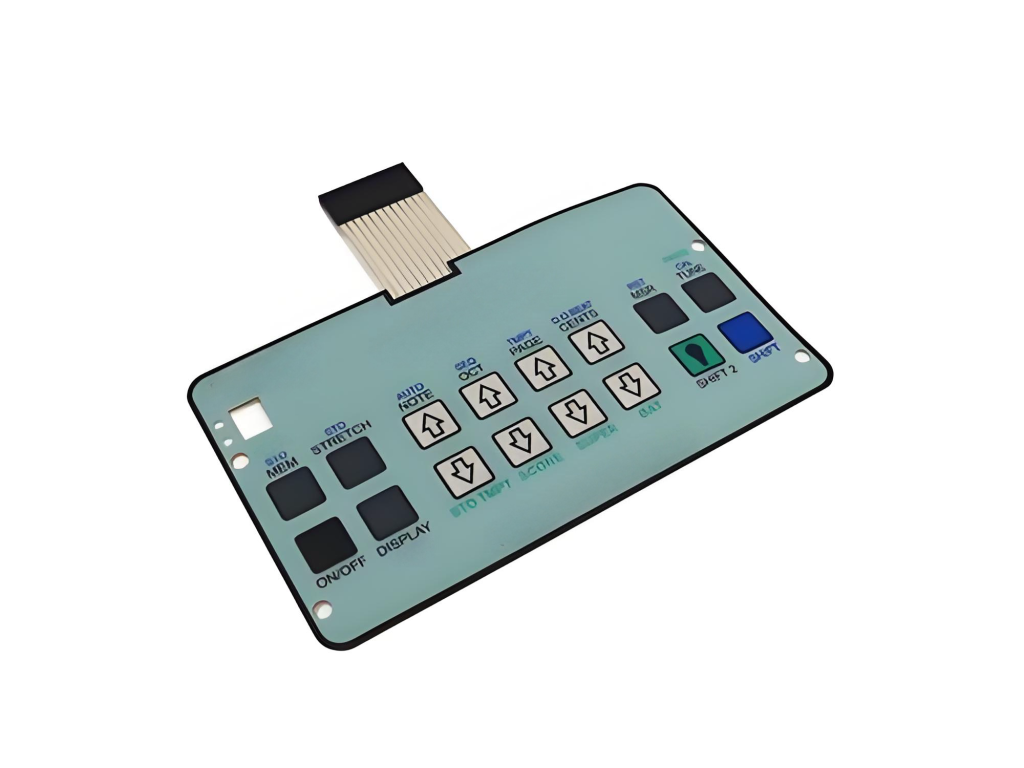
This design allows membrane switches to be thin, flexible, and highly durable. The absence of exposed moving parts protects them from dust, spills, and wear.
How Do Membrane Switches Work?
Pressing a key or button pushes the top graphic layer into contact with the circuit layer beneath it. This closes the circuit, sending a signal to the device’s controller.
When released, the layers separate, opening the circuit and ending the signal. Some switches include tactile domes or small bumps to provide sensory feedback.
Membrane switches are often resistant to environmental stress, including moisture, dirt, and chemicals. They can be designed with flexible or rigid substrates depending on the application. This flexibility allows them to fit into compact devices where mechanical switches might be too bulky.
Because of this simple yet effective operation, membrane switches remain highly reliable over thousands of presses, making them ideal for medical, industrial, and consumer electronics.
How Does a Membrane Switch Button Function?
A membrane switch button is essentially a single functional unit of a membrane panel. When you press it, the action compresses the layers together.
There are two primary types of membrane switch buttons:
- Tactile Membrane Switch: These include a dome or similar element that snaps under pressure.
- Non-Tactile Membrane Switch: These are soft and quiet.
The button’s surface can be printed with symbols, numbers, or icons. It may also include an LED for illumination, making it easier to see in low-light settings.
A membrane switch button is an integral part of the overall interface. Its design ensures quick response, reliability, and easy integration into electronic systems.
What is a Membrane Switch Used For?
Membrane switches are incredibly versatile and appear in countless applications. Here are some common uses:
- Medical Electronics: Devices like diagnostic equipment, monitoring systems, and lab instruments.
- Consumer Electronics: Remote controls, calculators, kitchen appliances.
- Industrial Equipment: Control panels, machinery interfaces, factory automation.
- Automotive Applications: Dashboard controls, keypads, and in-car entertainment systems.
Their durability, water resistance, and low maintenance make them particularly valuable in environments where hygiene, reliability, and longevity are critical.
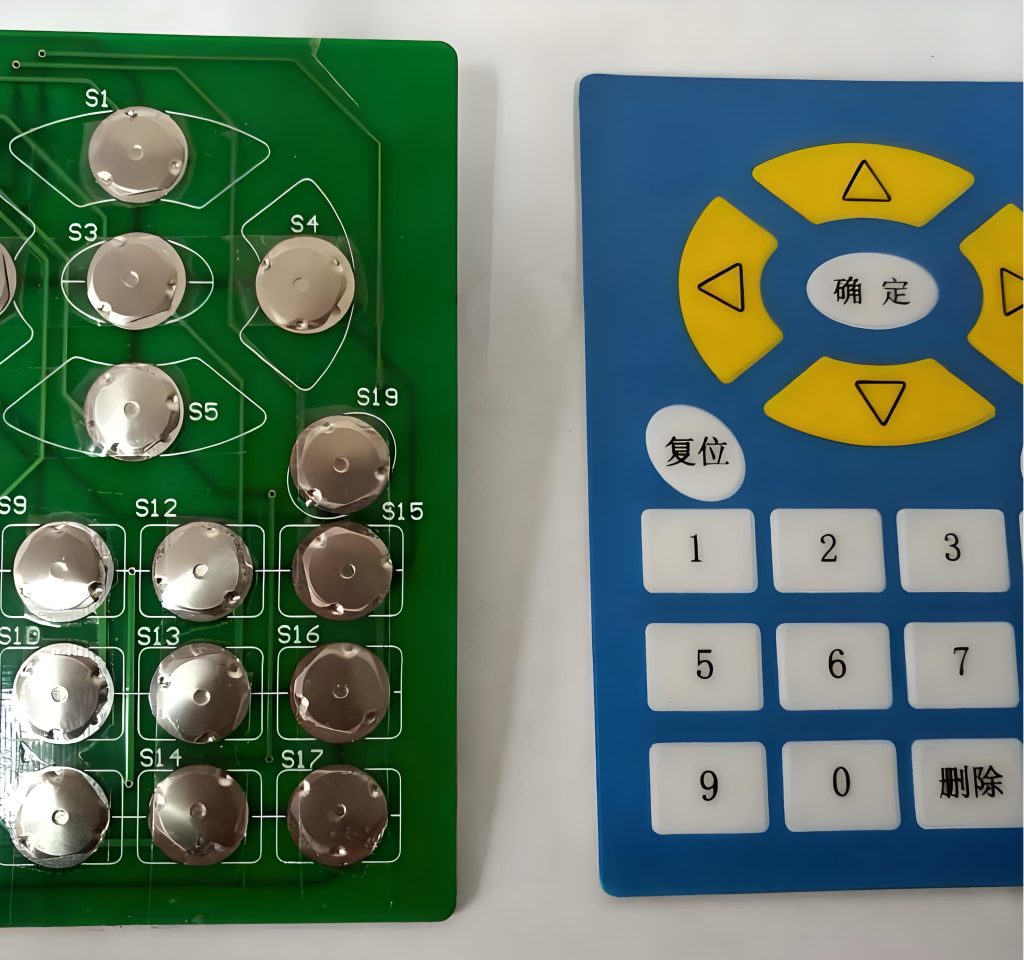
Membrane switches provide a smooth, flat surface that is easier to clean than traditional mechanical switches, making them indispensable in healthcare and food processing industries.
What Are the Benefits of Membrane Switches for Medical Electronics?
Medical electronics require precise, reliable, and hygienic controls. Membrane switches meet these demands beautifully.
- Easy to Clean: Their flat surface allows quick disinfection, reducing contamination risks.
- Durable: Resistant to wear, chemicals, and moisture.
- Low Maintenance: Minimal moving parts mean fewer mechanical failures.
- Compact Design: Fits in small devices without compromising function.
- Customizable: Can include tactile feedback, LEDs, or specialized graphics to guide users.
These advantages make membrane switches ideal for hospital equipment, diagnostic machines, and lab instruments. Their reliability ensures that medical professionals can focus on patient care without worrying about device failure.
Why Choose a Membrane Switch with LED?
Integrating LEDs into a membrane switch adds functionality and aesthetic appeal. LED illumination can indicate the status of a device, guide users, or improve usability in low-light conditions.
Some benefits of LED membrane switches include:
- Enhanced Visibility: Keys are easy to see in dark environments.
- User Guidance: LEDs can indicate active functions or errors.
- Design Flexibility: Custom lighting patterns can enhance device branding.
- Energy Efficiency: Modern LEDs consume very little power, even in constant operation.
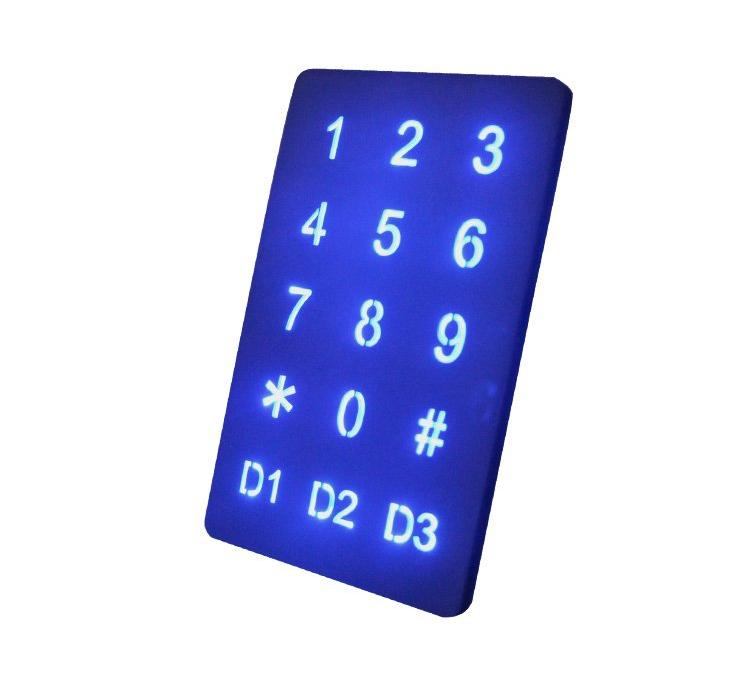
Choosing a membrane switch with LED ensures a seamless user experience while maintaining the reliability and compact design of a standard membrane interface.
Conclusion:
Membrane switches are ideal for medical electronics, industrial applications, and consumer electronics, offering ease of cleaning, reliability, and customizability. Adding LED lights further enhances visibility and ease of use, making the device more intuitive and professional.
For inquiries or customized solutions, reach out to sales@best-membraneswitch.com

What is Membrane Switch Dome? China Metal Dome Membrane Switch
Membrane switch domes have become a staple in modern electronic interfaces. Their reliability, tactile feedback, and versatility make them a preferred choice in industries ranging from consumer electronics to industrial controls. Unlike conventional rubber switches, metal dome membrane switches offer precise actuation, consistent response, and a sleek user experience. What is a Membrane Switch Dome? ...
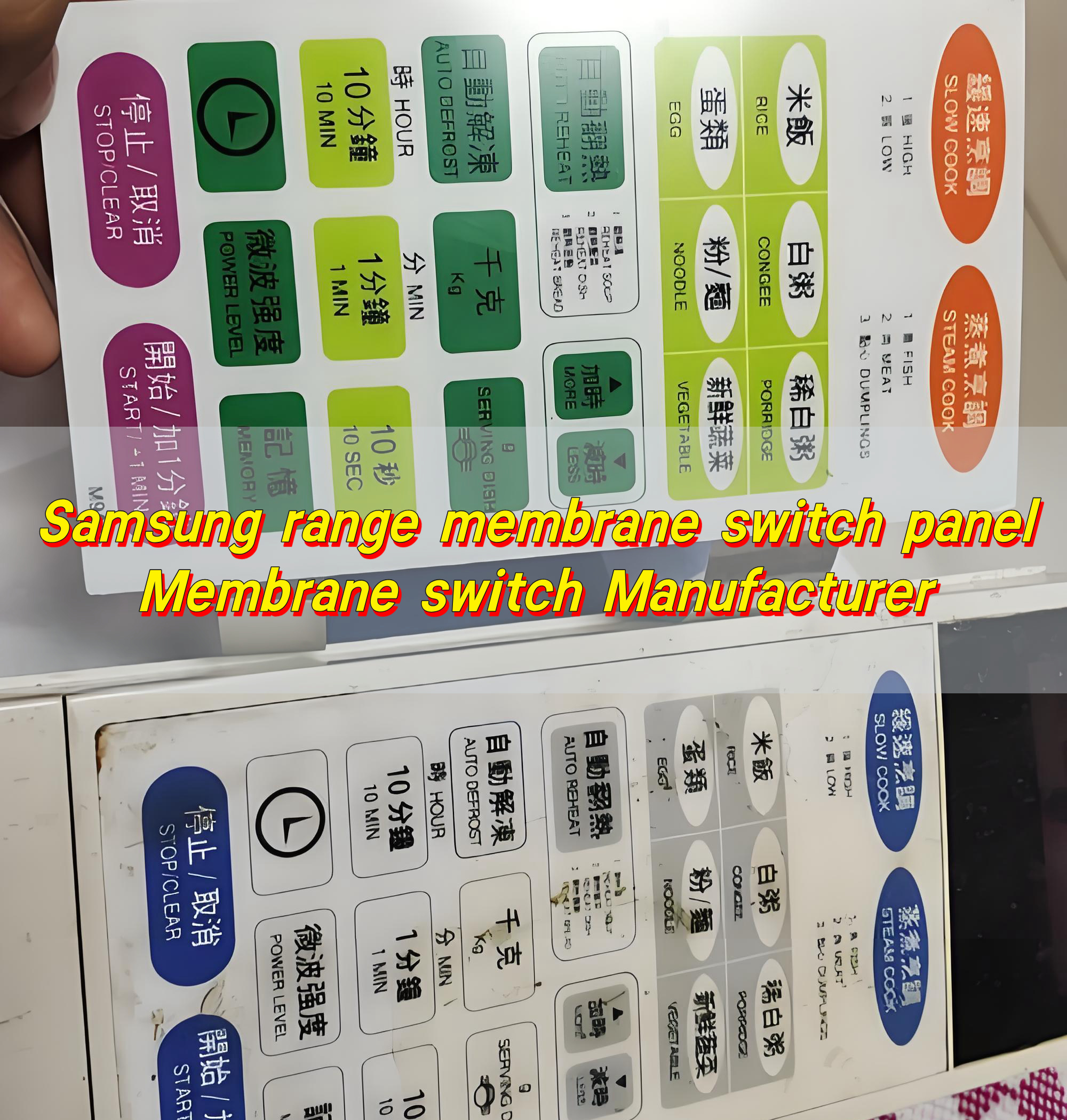
Samsung Range Membrane Switch Panel, Membrane Switch Manufacturer
What is a Samsung Range Membrane Switch Panel? Samsung range membrane switch panel is an advanced control interface used in Samsung ovens and cooktops. Unlike traditional mechanical switches, it relies on a thin, flexible membrane that senses touch or pressure. The membrane switch panel has multiple layers. The top layer shows the visible keys and ...
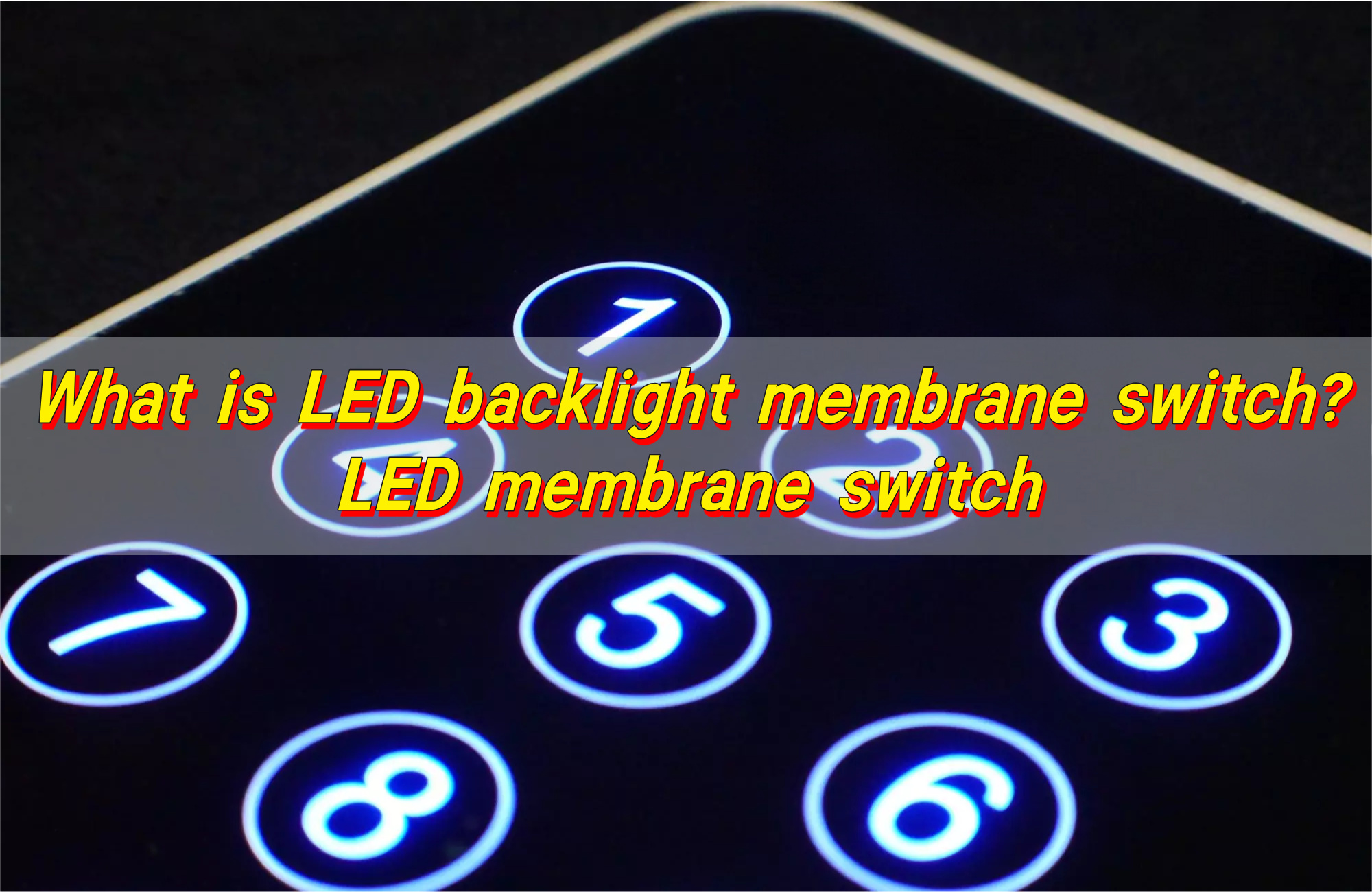
What is LED backlight membrane switch? LED membrane switch
What Is an LED Backlight Membrane Switch? An LED backlight membrane switch is a flat, flexible interface that integrates LEDs beneath the tactile buttons. This setup illuminates the switch surface, making controls visible even in low-light environments. The switch consists of several layers: LED backlighting can be monochrome, multi-color, or programmable. Some designs allow brightness ...
Contact us online